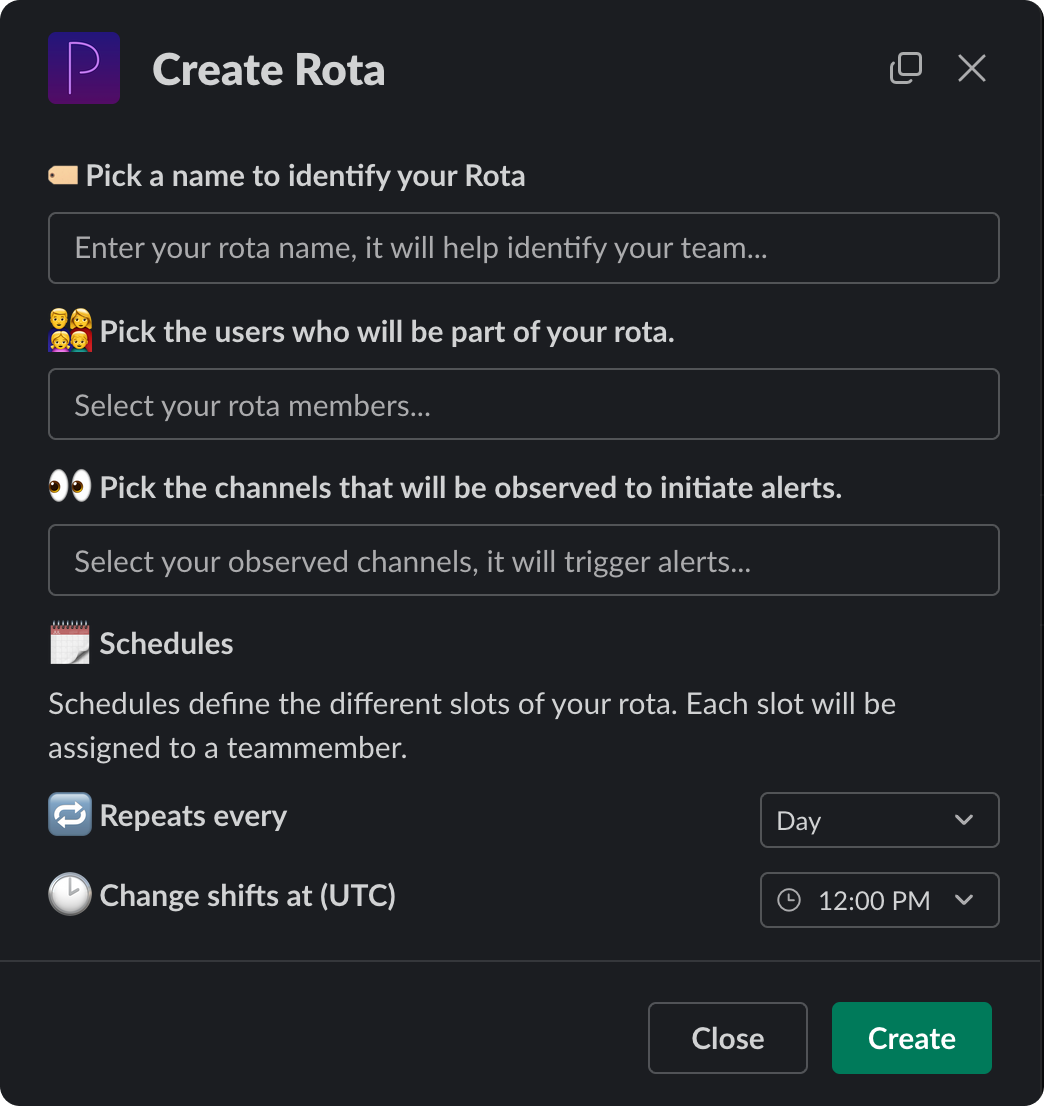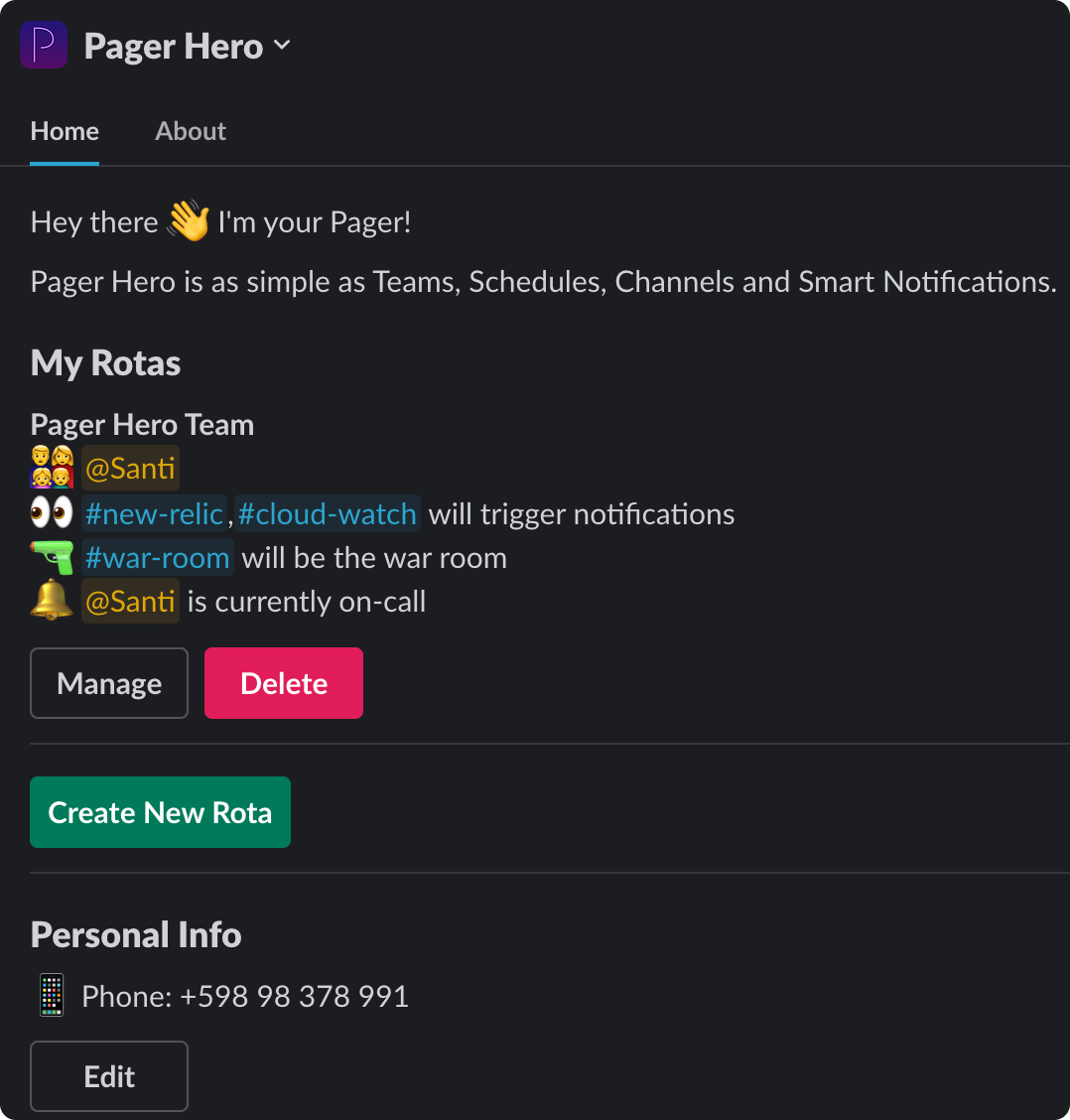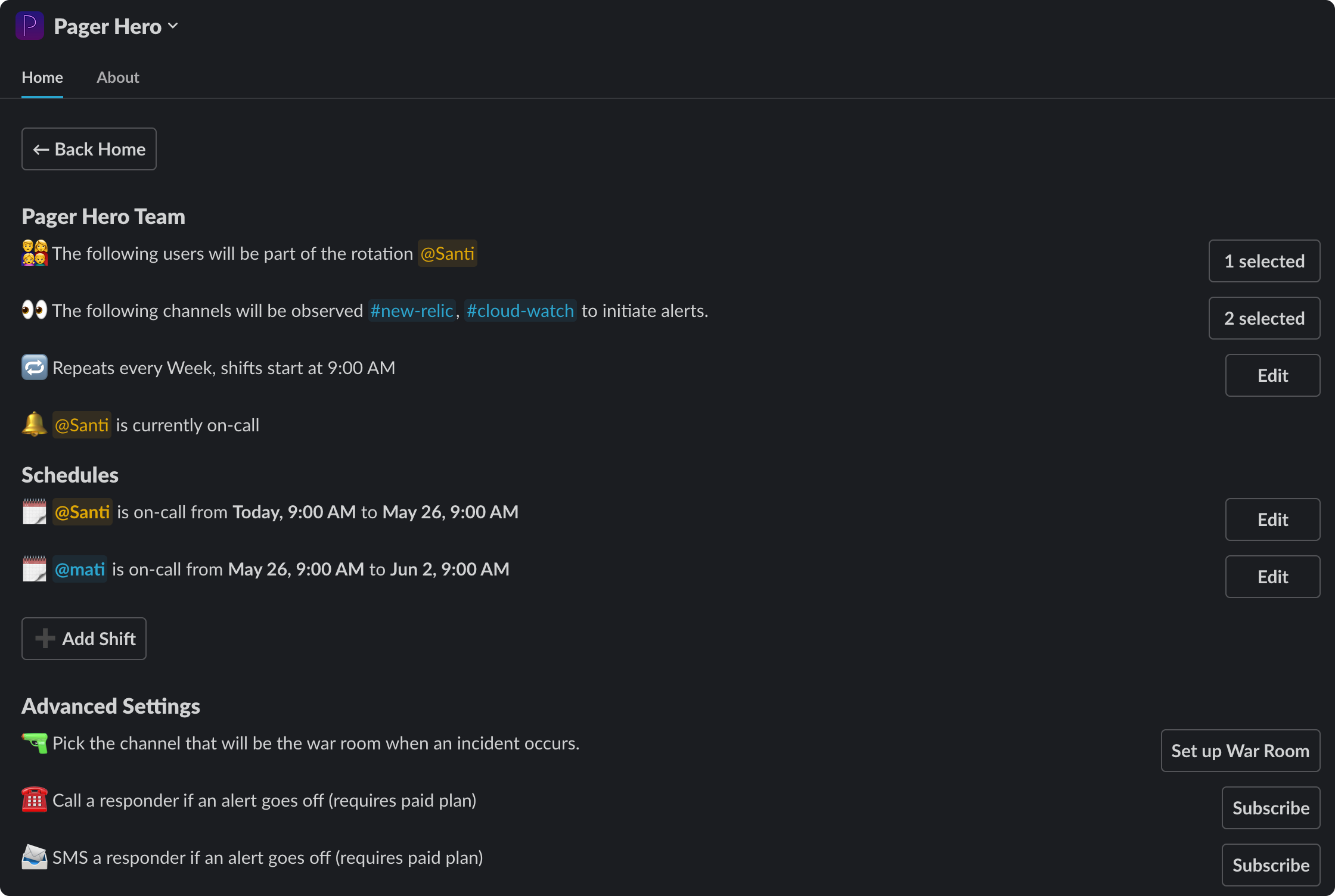Understanding On-Call Rotations
Rotations
Understanding On-Call Rotations: Ensuring Smooth Operations
Many organizations rely heavily on the continuous availability of their services and systems. Each minute a service is not operational, companies lose not only money but also it hurts their reputation. Whether it's a tech startup or a global enterprise, ensuring that someone is always available to handle emergencies or critical incidents is crucial. This is where on-call rotations come into play. In this blog post, we are going to cover how you can configure on-call rotations by using Pager Hero.
What is an On-Call Rotation?
An on-call rotation is a scheduled period during which designated personnel (often referred to as on-call engineers or responders) are responsible for responding to incidents or urgent issues that may arise outside of regular working hours. This could include weekends, holidays, or overnight shifts.
Key Elements of an On-Call Rotation:
- Rotation Schedule: Typically, teams organize on-call schedules in a rotating fashion. For instance, a team of engineers might take turns being on-call for one week at a time, and then rotate to the next team member. Rotation schedules can be easily configured when a rota is created on Pager Hero, see the screenshot below. On the "Repeats Every" section, you can pick from 1 to 6 days, 1 to 4 weeks, and a month.

-
Coverage Hours: Define the specific hours during which on-call responders are expected to be available. This could vary based on the organization's needs, but it commonly covers evenings, weekends, and holidays when regular staff may not be present. On Pager Hero, there is a Change shift time defined when an on-call rotation is created as you can see in the previous screenshot.
-
Escalation Procedures: Establish clear guidelines on when and how issues should be escalated if the primary on-call responder cannot resolve the issue independently. This ensures that there's a chain of command or additional support available if needed. Usually, escalation processes involve engaging with another team in the organization or engaging more senior engineers/personnel.
-
Tools and Resources: Provide the necessary tools, access permissions, and documentation to enable on-call responders to quickly diagnose and address issues remotely. This usually refers to runbooks, a blog post will be created soon talking about runbooks.
Benefits of On-Call Rotations
Implementing a well-defined on-call rotation offers several benefits:
-
Continuous Support: Ensures that there's always someone available to address critical incidents, reducing downtime and minimizing the impact on users or customers.
-
Work-Life Balance: By rotating the responsibility among team members, organizations can mitigate burnout and ensure that the burden of being on-call is distributed fairly. It's not fair that always the same person responds to incidents. Being an on-call responder also gives ownership and responsibilities to engineers which ends up producing a better culture and increases the quality of the deliverables.
-
Skill Development: On-call rotations provide valuable opportunities for engineers to gain experience in troubleshooting under pressure and dealing with urgent situations, thereby enhancing their skills. After being successfully responding to multiple incidents, the engineers gain confidence in their skills and learn how to deal with uncertainty.
Challenges to Consider
While on-call rotations are essential for maintaining operational stability, they can pose challenges:
-
Availability: Ensuring that on-call responders are readily available and responsive can be challenging, especially in distributed teams or across different time zones.
-
Fatigue: Constantly being on standby can lead to fatigue and reduced productivity if not managed properly. It's crucial to balance the workload and provide adequate support. Managers should keep an eye on each on-call responder.
-
Documentation and Training: Ensuring that all on-call responders are adequately trained and have access to up-to-date documentation is essential for effective incident response. An interesting idea is to take advantage of incidents that occur during working hours engaging engineers who are preparing to be added to the on-call rotation.
Best Practices for Implementing On-Call Rotations
To optimize the effectiveness of on-call rotations, consider the following best practices:
-
Clear Communication: Establish transparent communication channels and expectations regarding on-call responsibilities, escalation paths, and availability. With Pager Hero, it's easy to know who is on call at each moment. By going to the Pager Hero app, you will see who is currently on-call.

-
Rotation Schedule: Implement a fair and predictable rotation schedule that takes into account team members' preferences and availability. Pager Hero implements a round-robbing technique and allows the admin to change shifts if needed.

-
Automation: Leverage automation tools for monitoring and alerting to reduce the manual burden on on-call responders and improve response times. For this point, Pager Hero relies on multiple tools that are already connected to Slack like New Relic, CloudWatch, Grafana, etc.
-
Post-Incident Reviews: Conduct post-incident reviews to identify areas for improvement in incident response processes and update documentation accordingly.
Summary
On-call rotations are a cornerstone of modern IT and operations management, ensuring that organizations can maintain high availability and respond promptly to incidents. It's not a trivial setup, but the benefits of having a solid process guarantee operational excellence by avoiding disruptions and therefore losing money. Pager Hero makes it easy to define clear schedules, implement best practices, and support on-call responders effectively. What are you waiting for? Try it out!
Extra tip Remember, effective on-call management is not just about being available—it's about enabling your team to respond swiftly and effectively when it matters most.